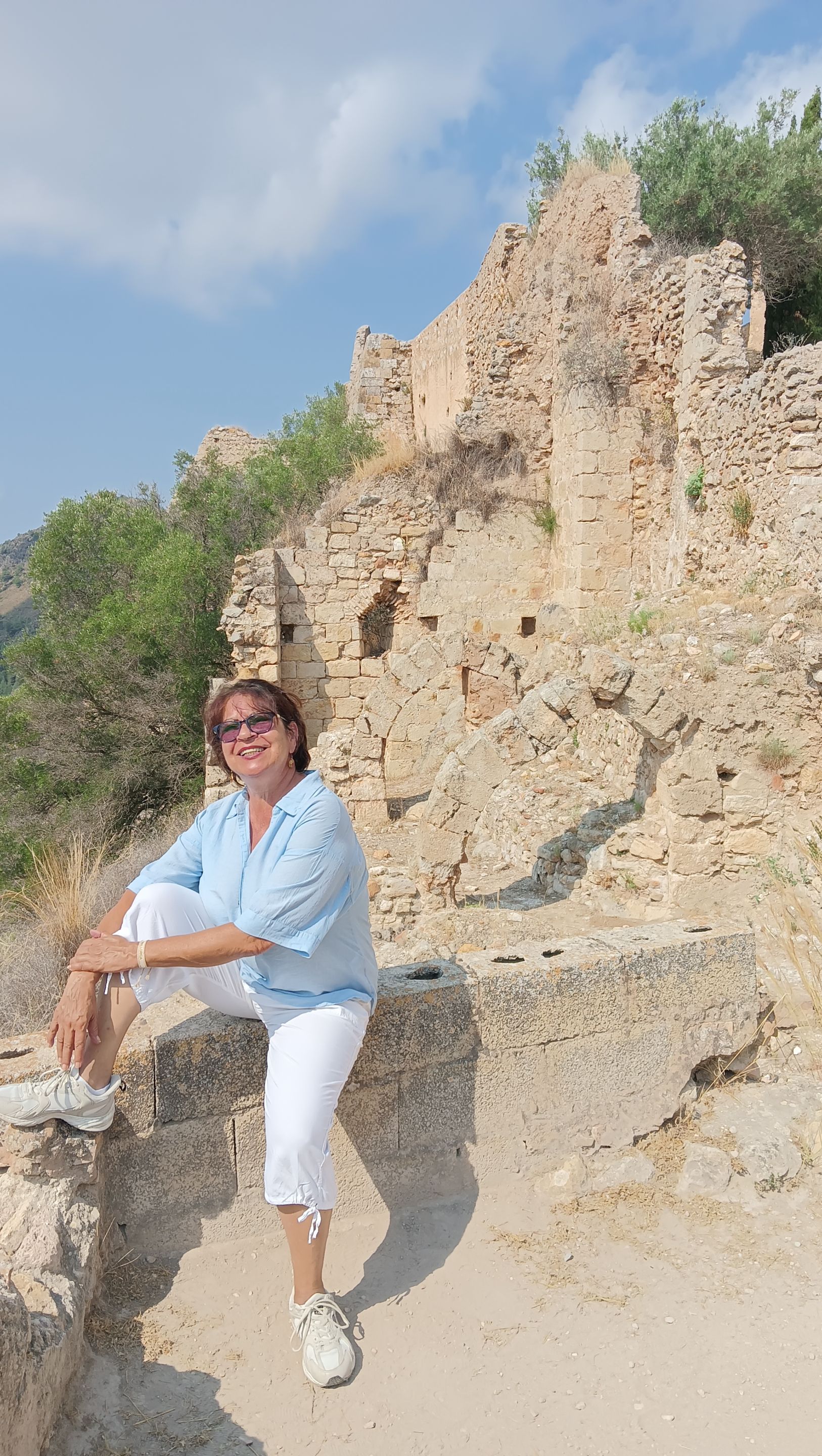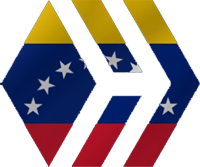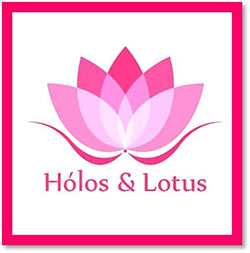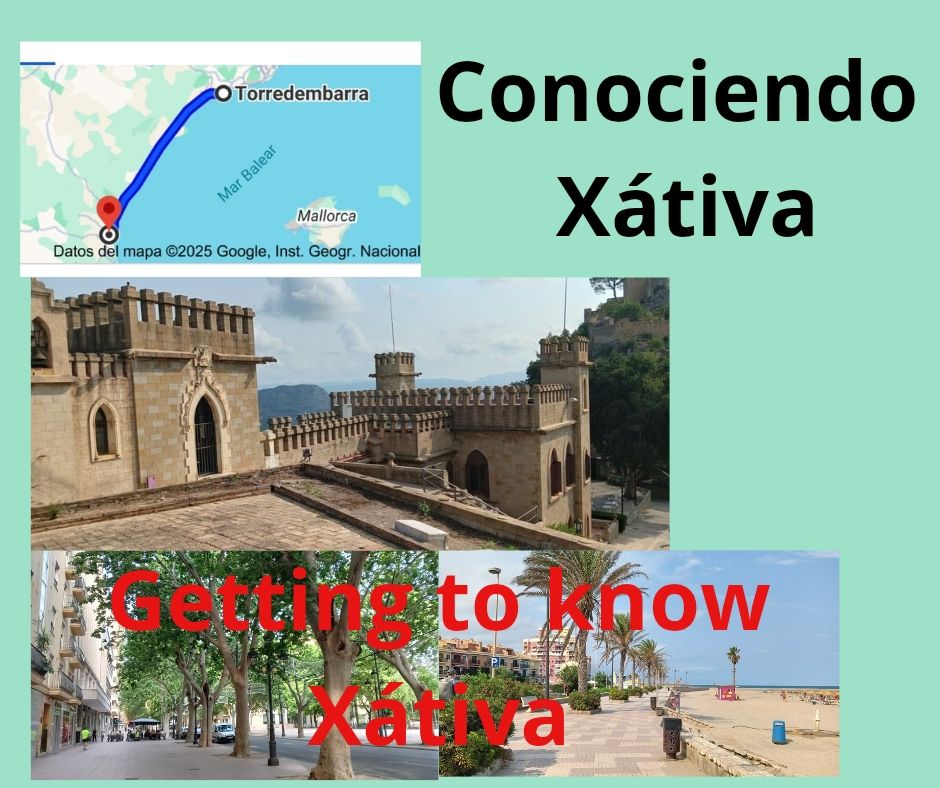
Saludos amigos de @worldmappin.
Dándole continuidad a lo que fue mi recorrido por algunas regiones de España, hoy les comparto la experiencia en la región de Valencia- España. Dividiré este recorrido en dos o tres entregas pues pasamos en la zona 6 días lo que me dio la oportunidad de conocer varios lugares.
Una vez que llegamos de Málaga a Torredembarra descansamos tres días para retomar los paseos, una amiga de mi hija, venezolana, nos invitó a pasar varios día con ella en el pueblo de Xátiva donde vive y fue tan amable que decidió venir con su pareja a buscarnos, así que el viaje lo realizamos en carro.
Greetings, friends of @worldmappin.
Continuing my journey through some regions of Spain, today I'm going to share my experience in the region of Valencia, Spain. I'll divide this trip into two or three parts, as we spent six days in the area, which gave me the opportunity to visit several places.
Once we arrived in Torredembarra from Malaga, we rested for three days before resuming our travels. A Venezuelan friend of my daughter's invited us to spend several days with her in the town of Xátiva where she lives. She was so kind that she decided to come with her partner to pick us up, so we made the trip by car.
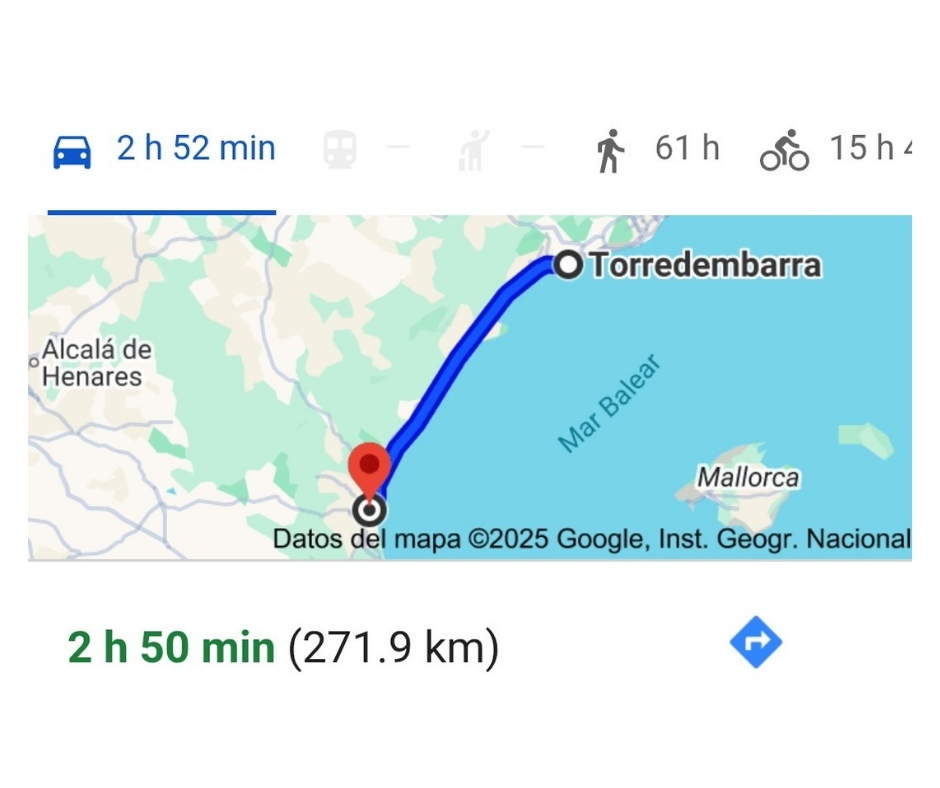
Salimos de Torredeembarra a eso de la 1pm, me habían comentado que eran como 4 horas de camino hasta Xátiva, con muy buen ánimo emprendimos el camino, el cual resultó sin novedad.
Antes de llegar a Valencia paramos en un pintoresco pueblo llamado Alboraya o mejor dicho en su hermosa playa, donde los muchachos querían que probara una de las bebidas típicas del verano, fresco de horchata que acompañan con fartons, un suave pan dulce, una merienda de sabores intensos muy bien definidos y que resultaron ser sabrosos.
Luego de la merienda hicimos un pequeño recorrido por el malecón que bordea la playa y entramos a una marina donde aprovechamos de tomarnos las respectivas
We left Torredeembarra at around 1 p.m. I had been told that it was about a four-hour drive to Xátiva, so we set off in high spirits, and the journey went smoothly.
Before reaching Valencia, we stopped at a picturesque village called Alboraya, or rather at its beautiful beach, where the boys wanted me to try one of the typical summer drinks, fresh horchata accompanied by fartons, a soft sweet bread, a snack with intense, well-defined flavors that turned out to be delicious.
After the snack, we took a short walk along the boardwalk that borders the beach and entered a marina where we took some photos.
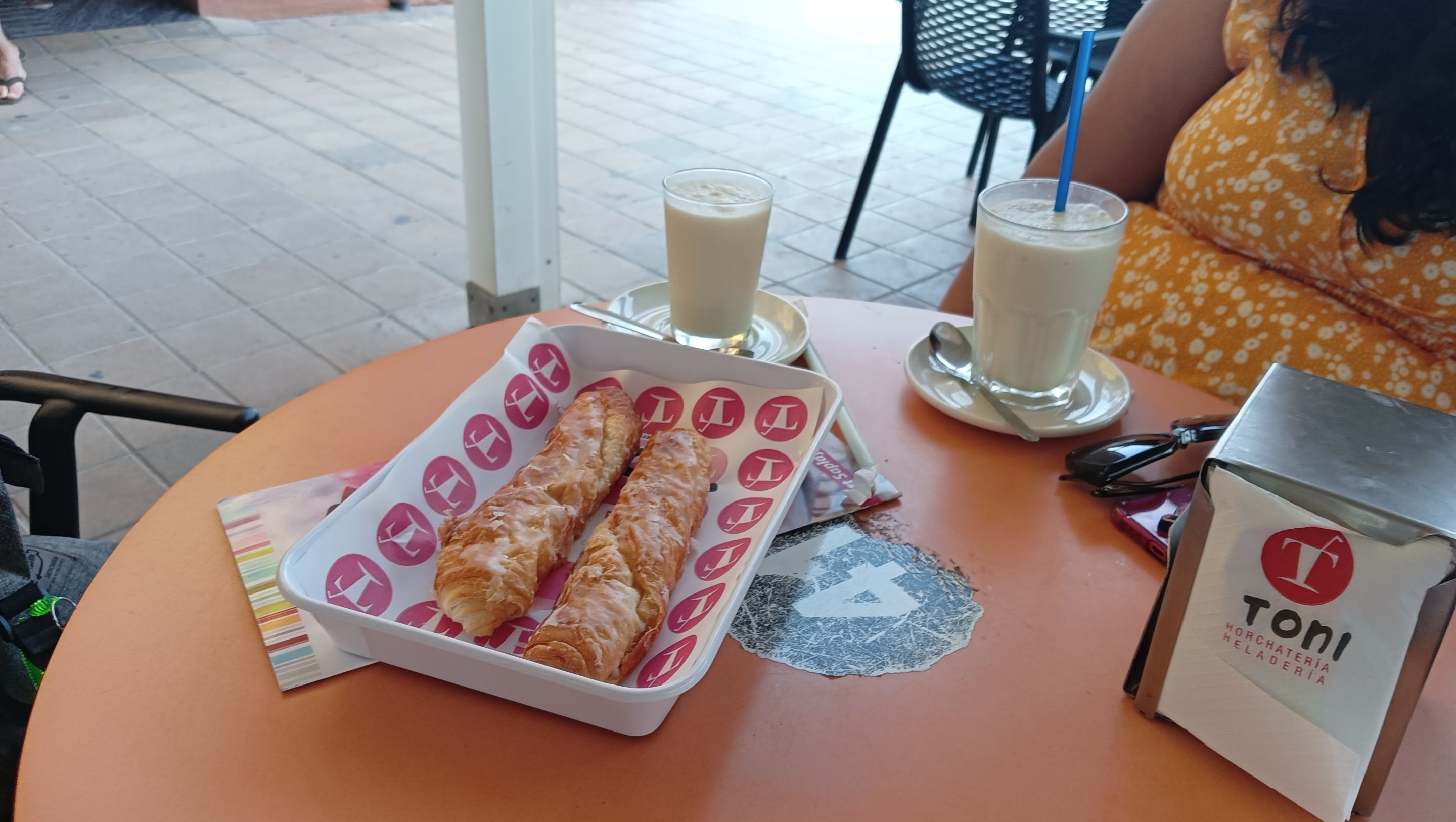
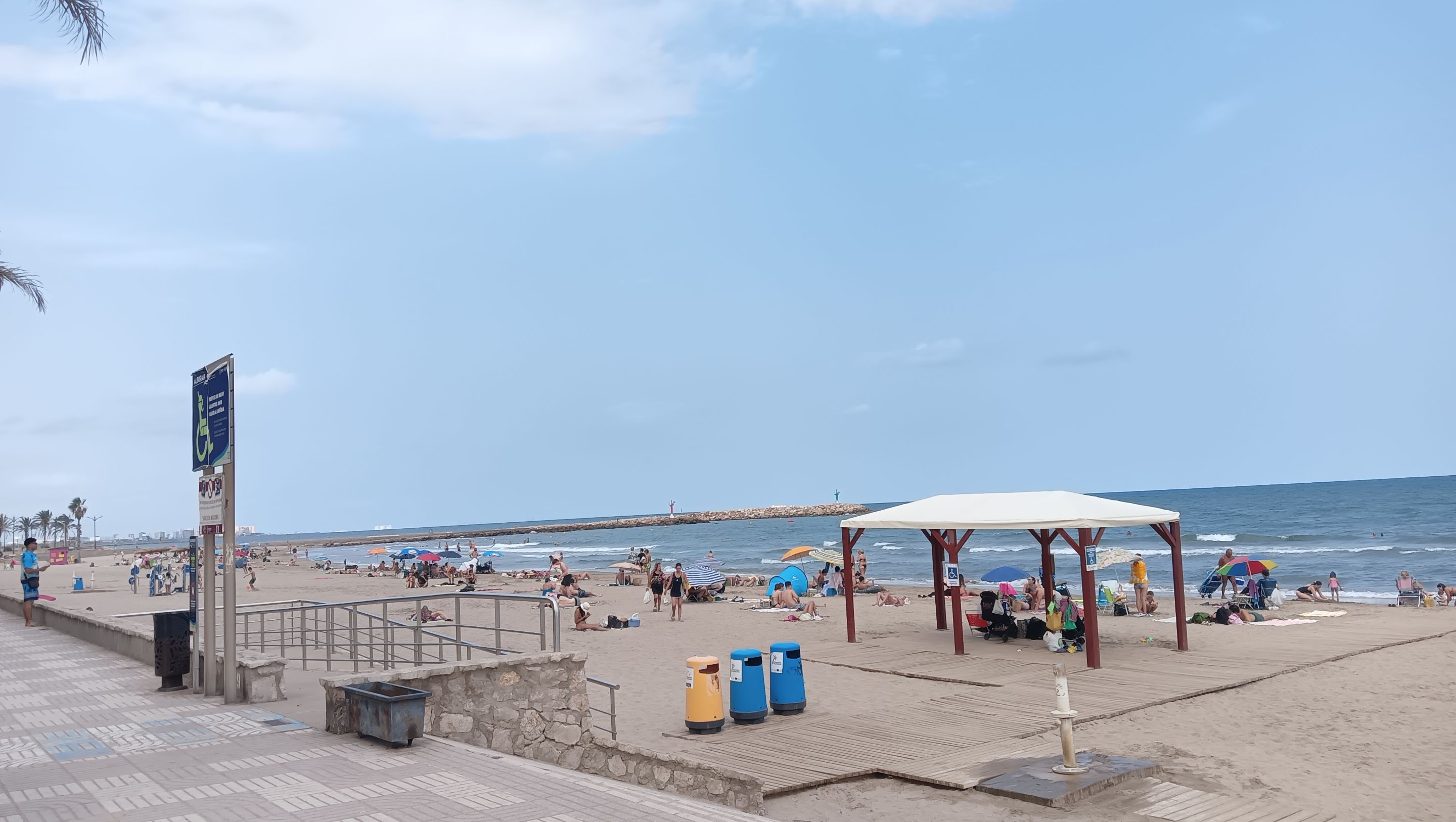
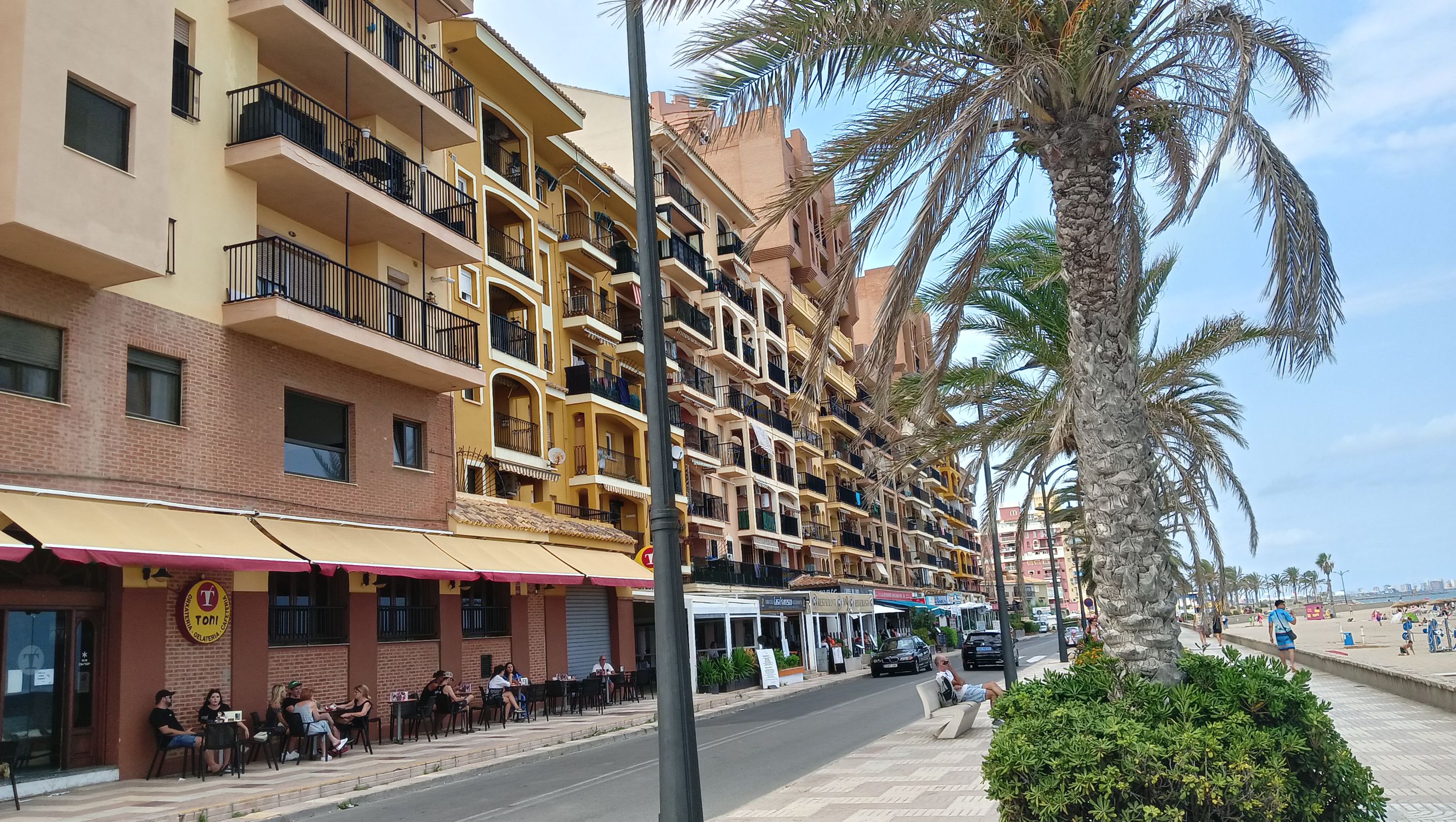
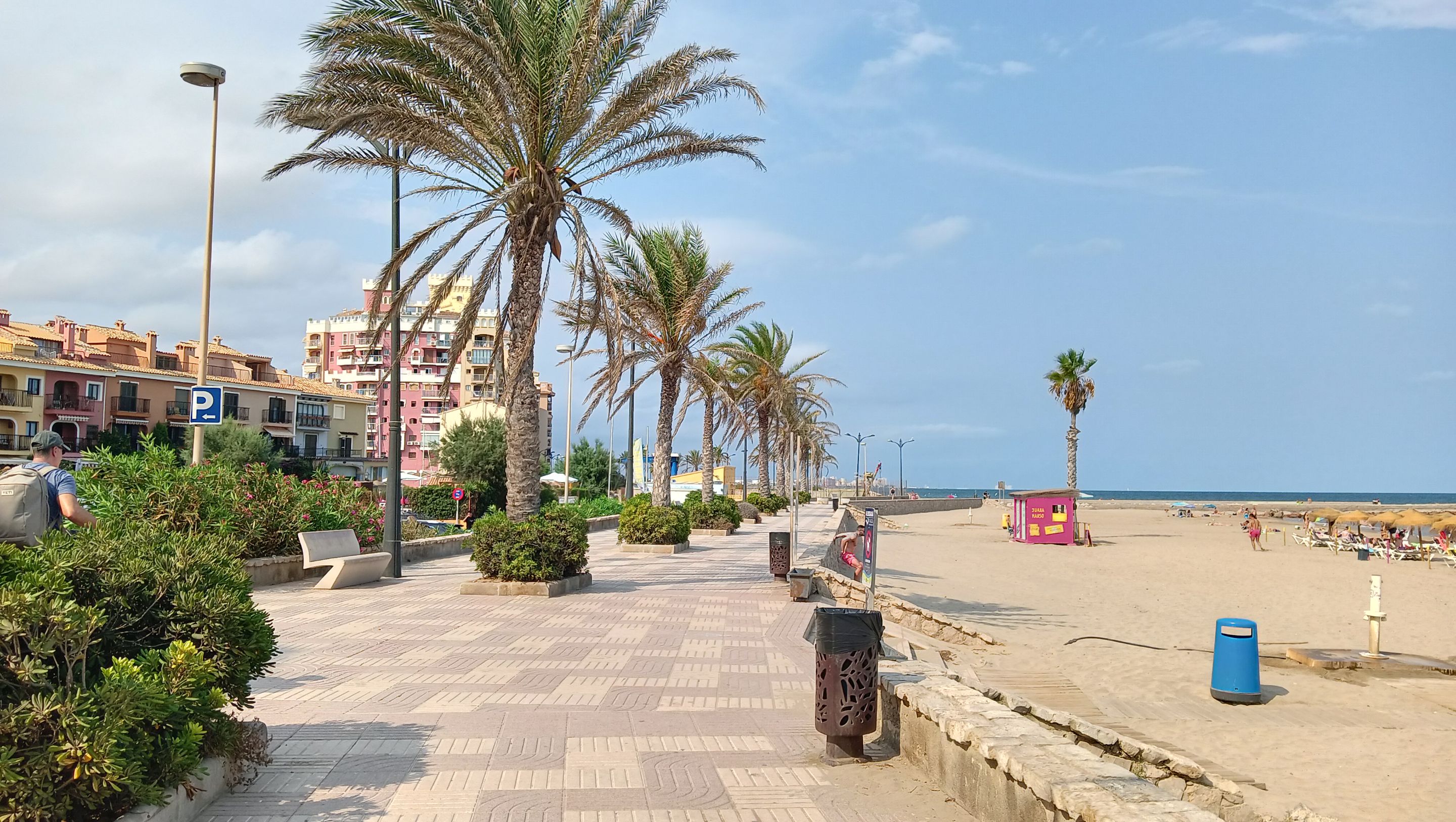
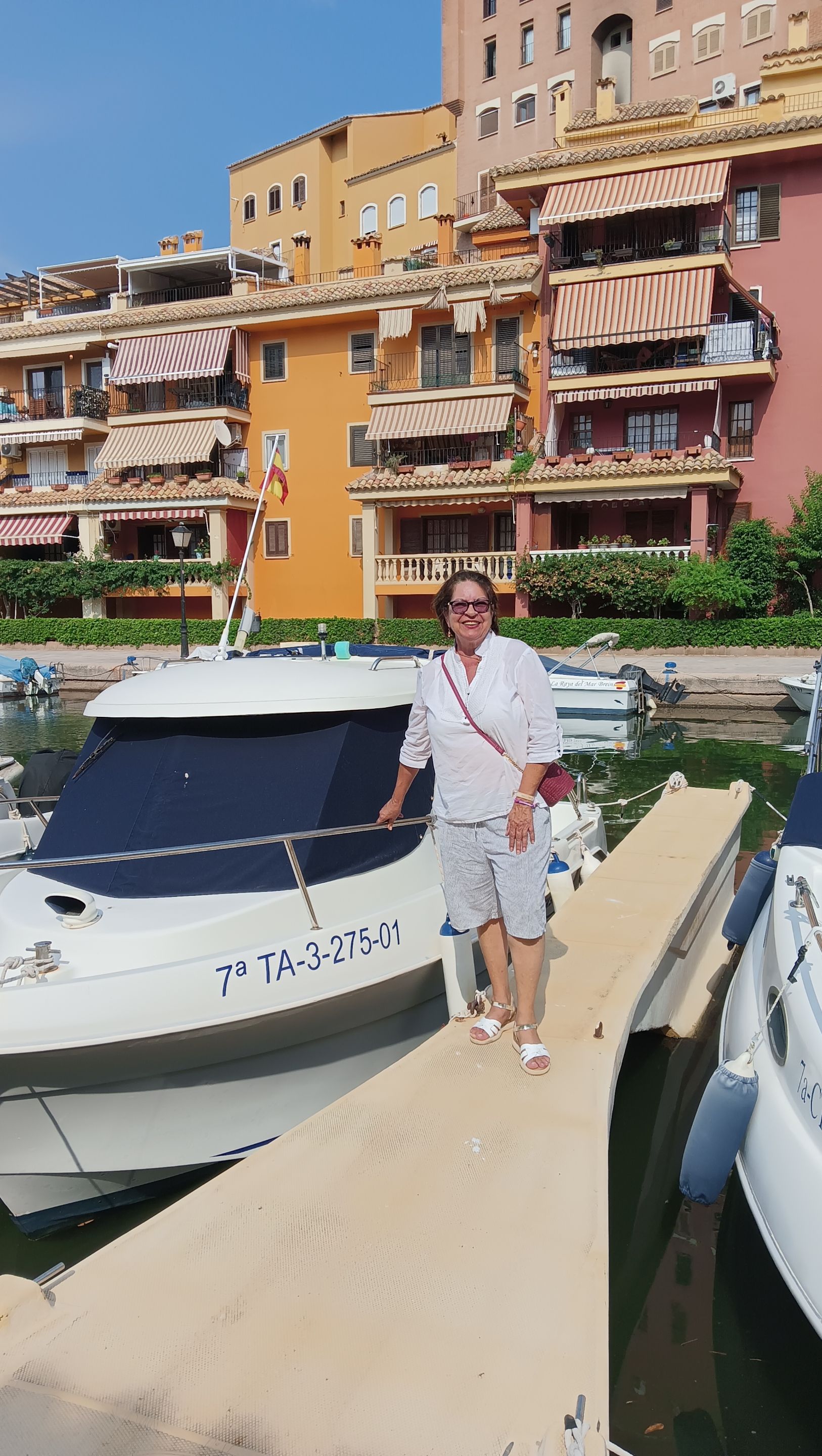
Continuamos el viaje, entramos a Valencia por una amplia avenida que la cruza y con la promesa de que antes de irnos regresaremos a ver algunas atracciones de la ciudad. Una hora después llegamos al pueblo, fuimos directamente al apartamento a descansar ya que al día siguiente iríamos al Castillo de Xátiva.
We continued our journey, entering Valencia via a wide avenue that crosses the city, promising ourselves that we would return to see some of the city's attractions before leaving. An hour later, we arrived in the village and went straight to the apartment to rest, as we were going to visit Xátiva Castle the next day.
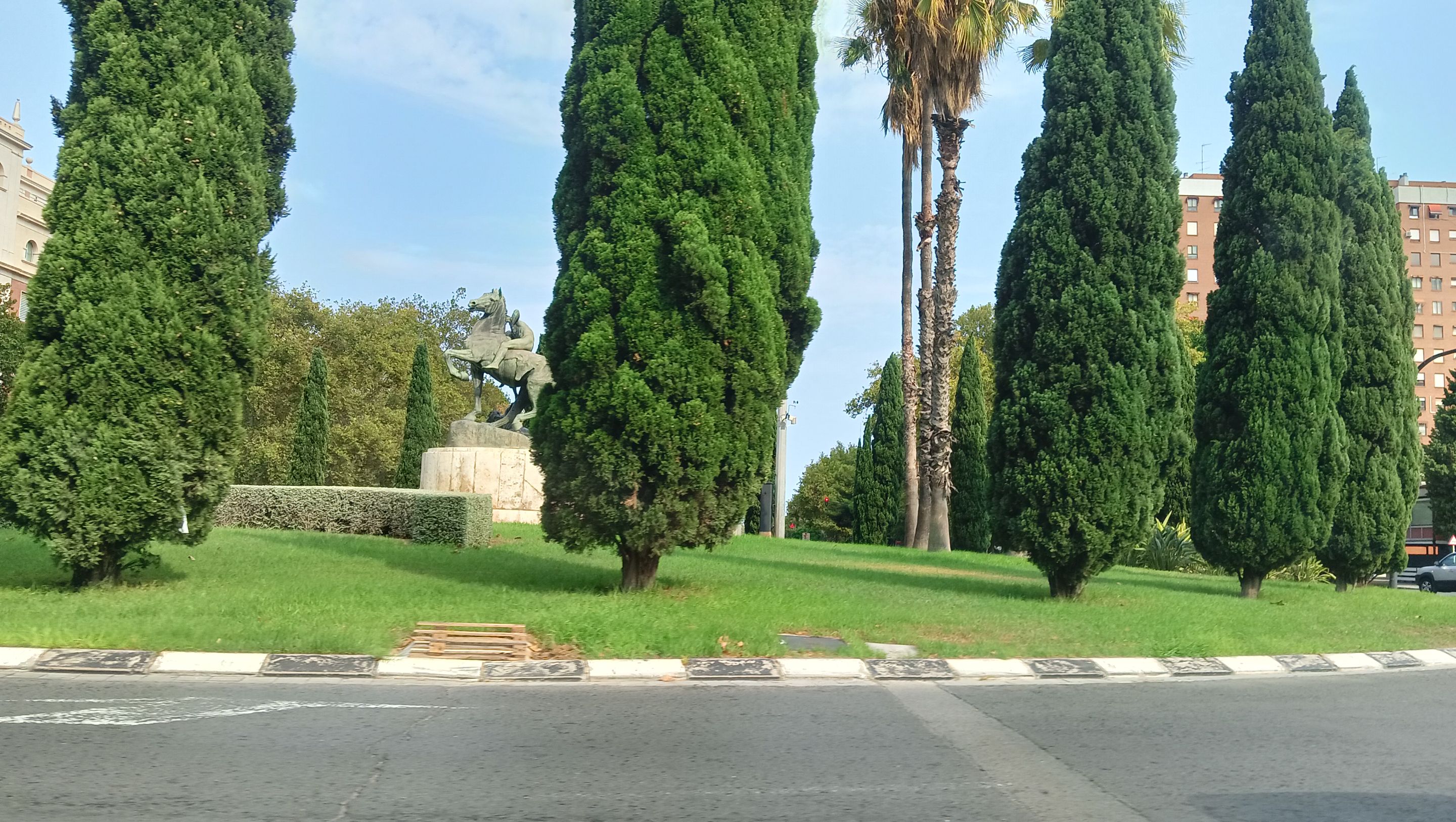

Castillo de Xátiva/Xátiva Castle
El Castillo se encuentra ubicado en una alta loma del pueblo por lo que desde distintos lugares se puede observar, para acceder a él, la mejor manera es acercarse a la oficina de turismo y tomar un autobús que te deja en la entrada, con un valor de 5€ por persona pasaje de ida y vuelta.
The castle is located on a high hill in the town, so it can be seen from different places. The best way to get there is to go to the tourist office and take a bus that drops you off at the entrance, which costs €5 per person for a round trip.
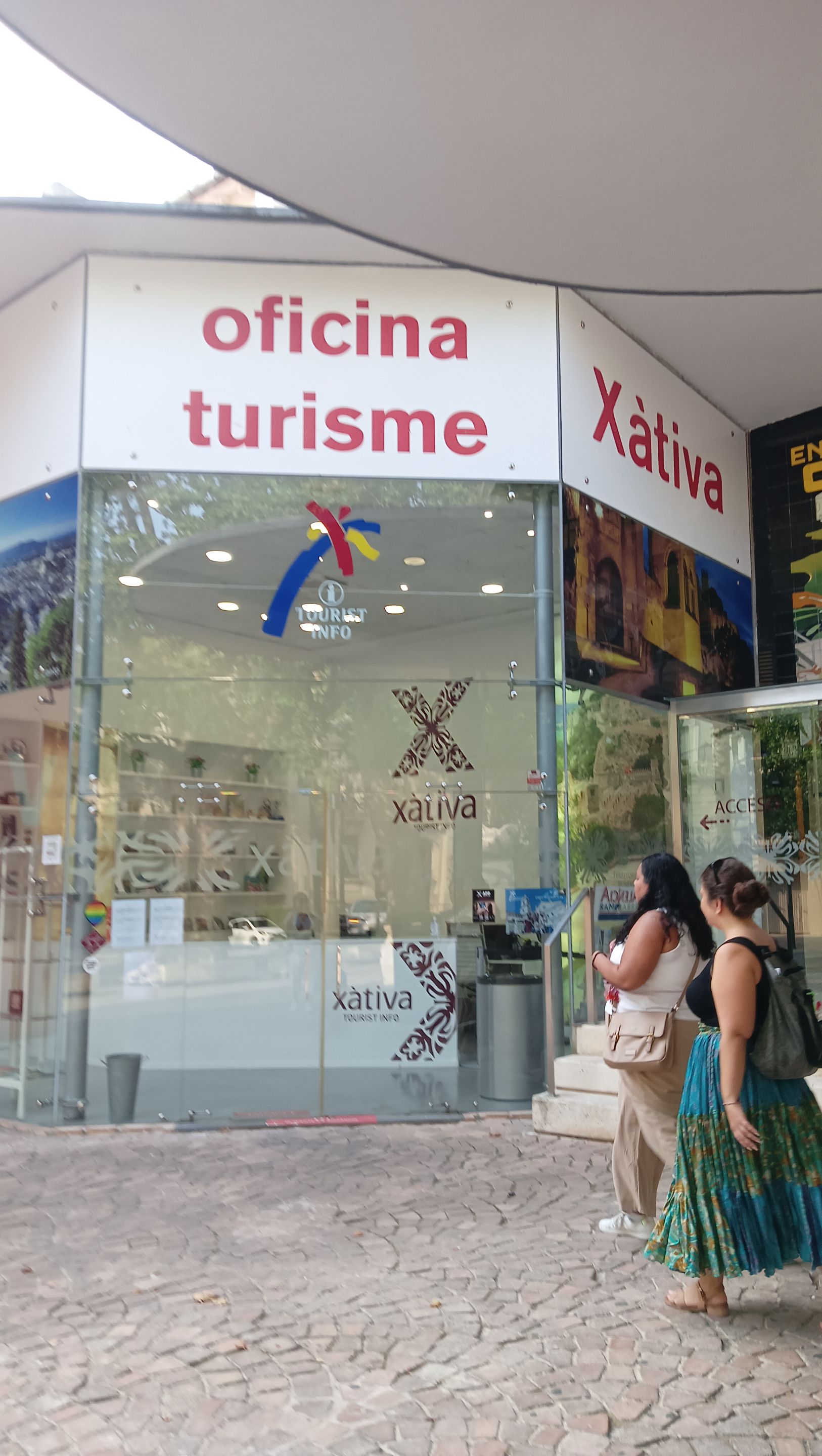

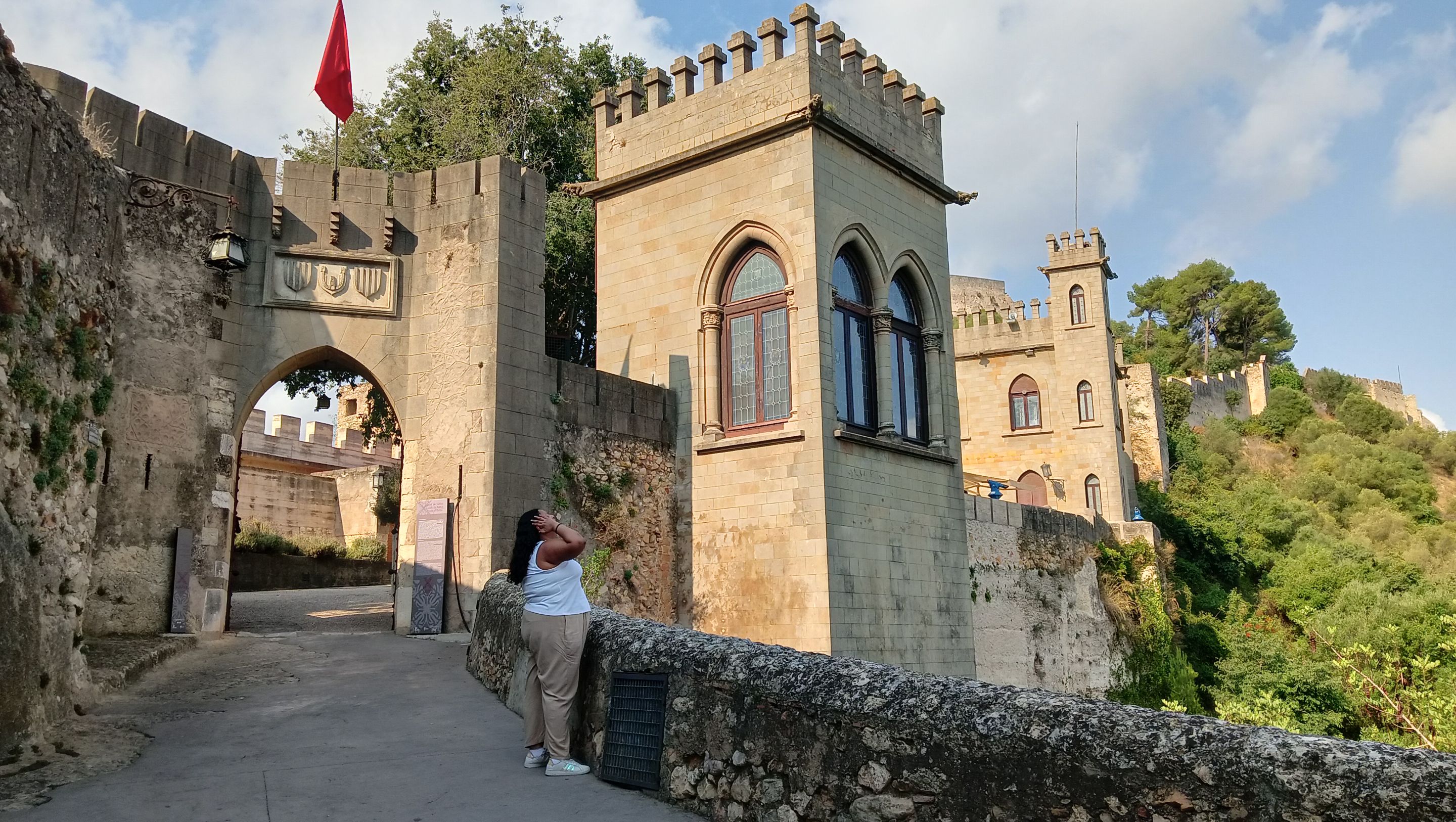
Ya en el castillo para subir y conocer cada uno de sus niveles paga una entrada de 2,50 €. Entre sus atractivos se encuentran un museo de historia que nos relata la vida del castillo y de la ciudad, con sus costumbres ancestrales y su modo de vida medieval, haciendo una clara distinción de los periodos de dominio islámicos y los correspondientes al mundo cristiano.
Once at the castle, you pay an entrance fee of €2.50 to go up and explore each of its levels. Among its attractions is a history museum that tells the story of the castle and the city, with its ancestral customs and medieval way of life, making a clear distinction between the periods of Islamic rule and those corresponding to the Christian world.
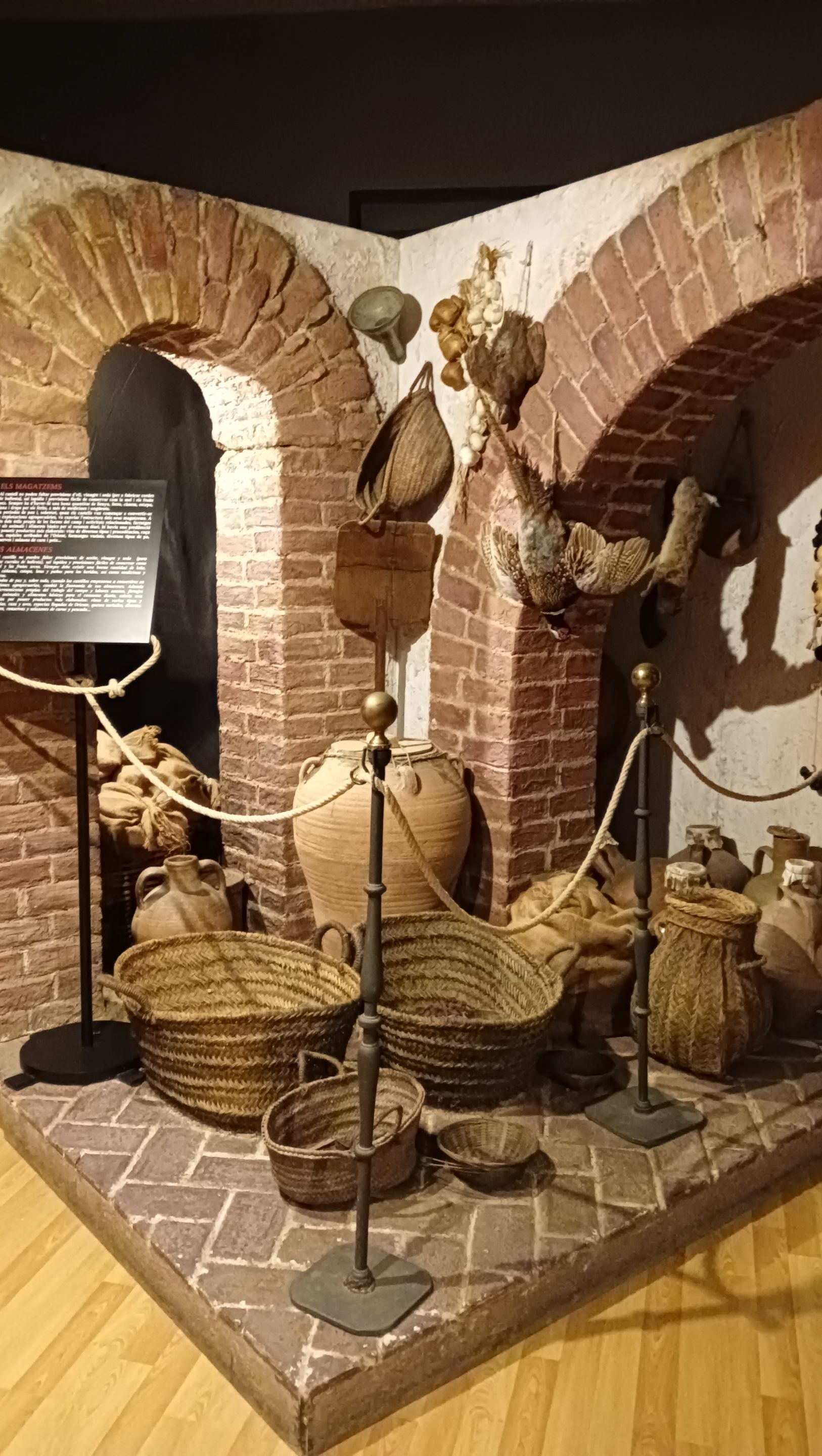
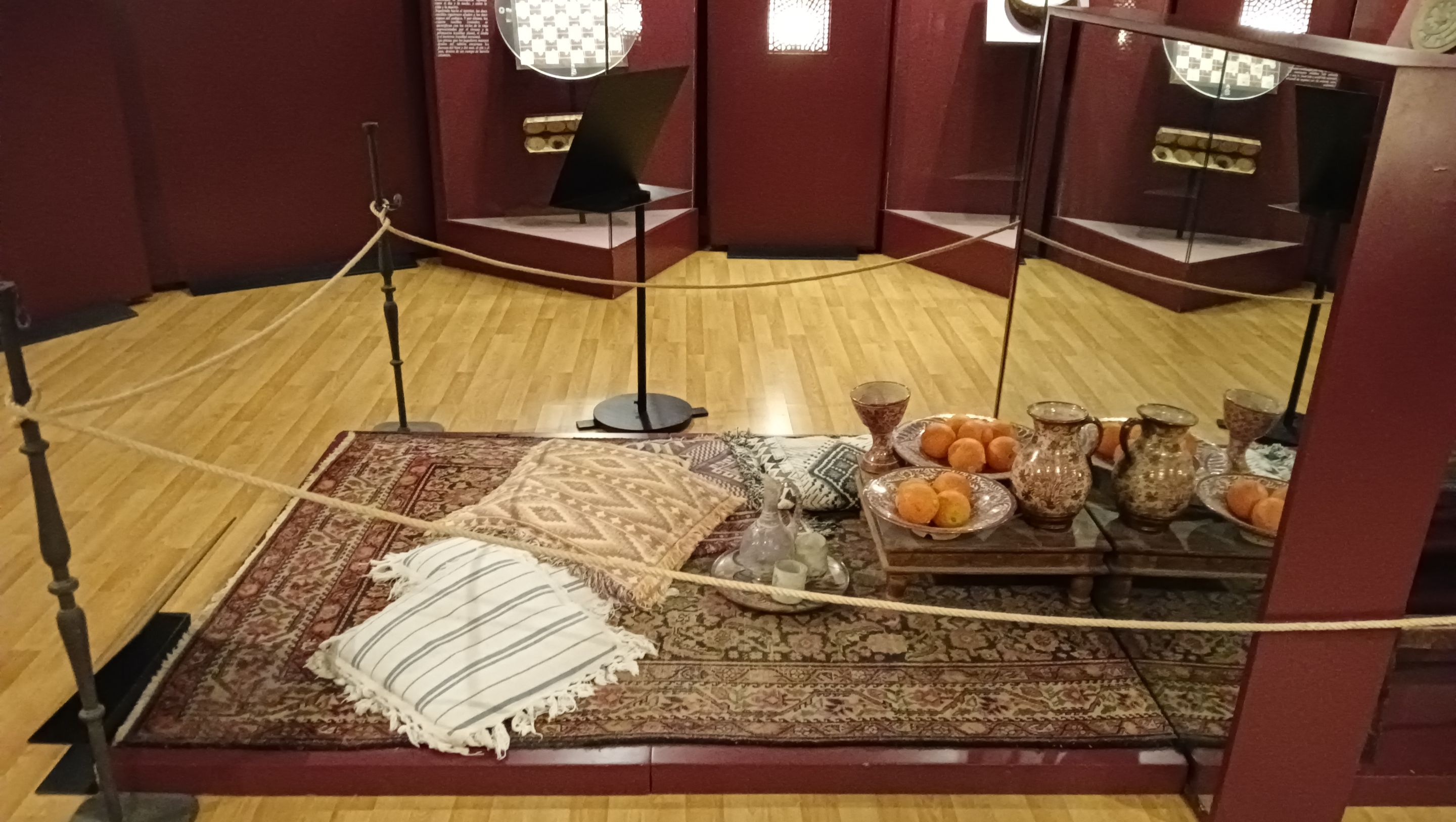
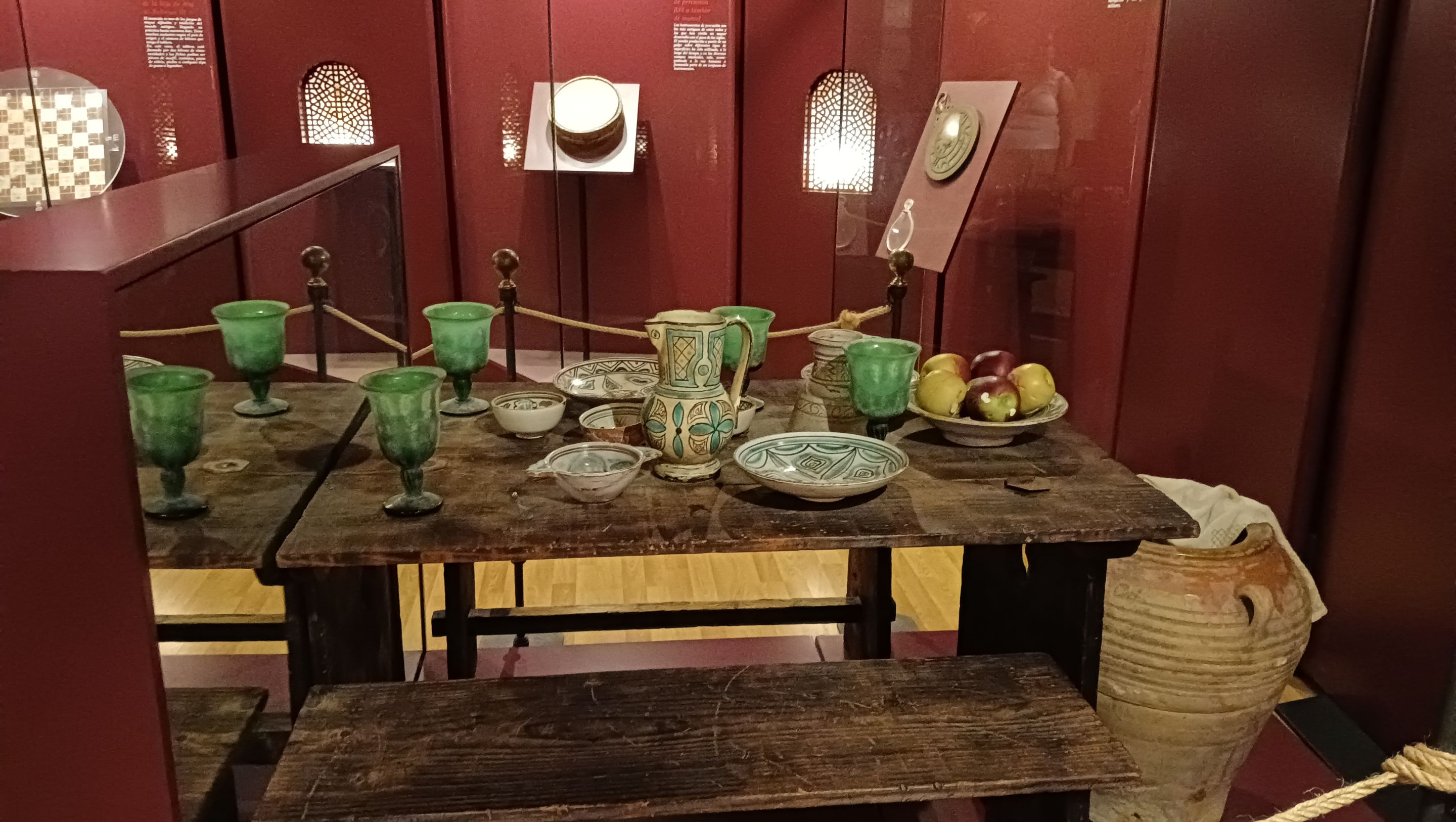
Cada nivel o puerta como son denominadas corresponden a áreas especificas, en la segunda puerta se encuentra el área de defensa del castillo, en la tercera puerta están conservadas las habitaciones con su marcado acento islámico; en la cuarta puerta se encontraban las habitaciones del personal militar, la cárcel y desde él se pueden observar hermosas vistas de la ciudad.
En esta última puerta hay un espacio amplio y sombreado con mesas como para merendar, allí aprovechamos para recuperar fuerzas y comenzar a descender.
Each level or gate, as they are called, corresponds to specific areas. The second gate leads to the castle's defense area, the third gate leads to rooms with a marked Islamic influence, and the fourth gate leads to the military personnel's quarters and the prison, from which you can enjoy beautiful views of the city.
In this last gate, there is a large, shaded area with tables for picnics, where we took the opportunity to recover our strength.
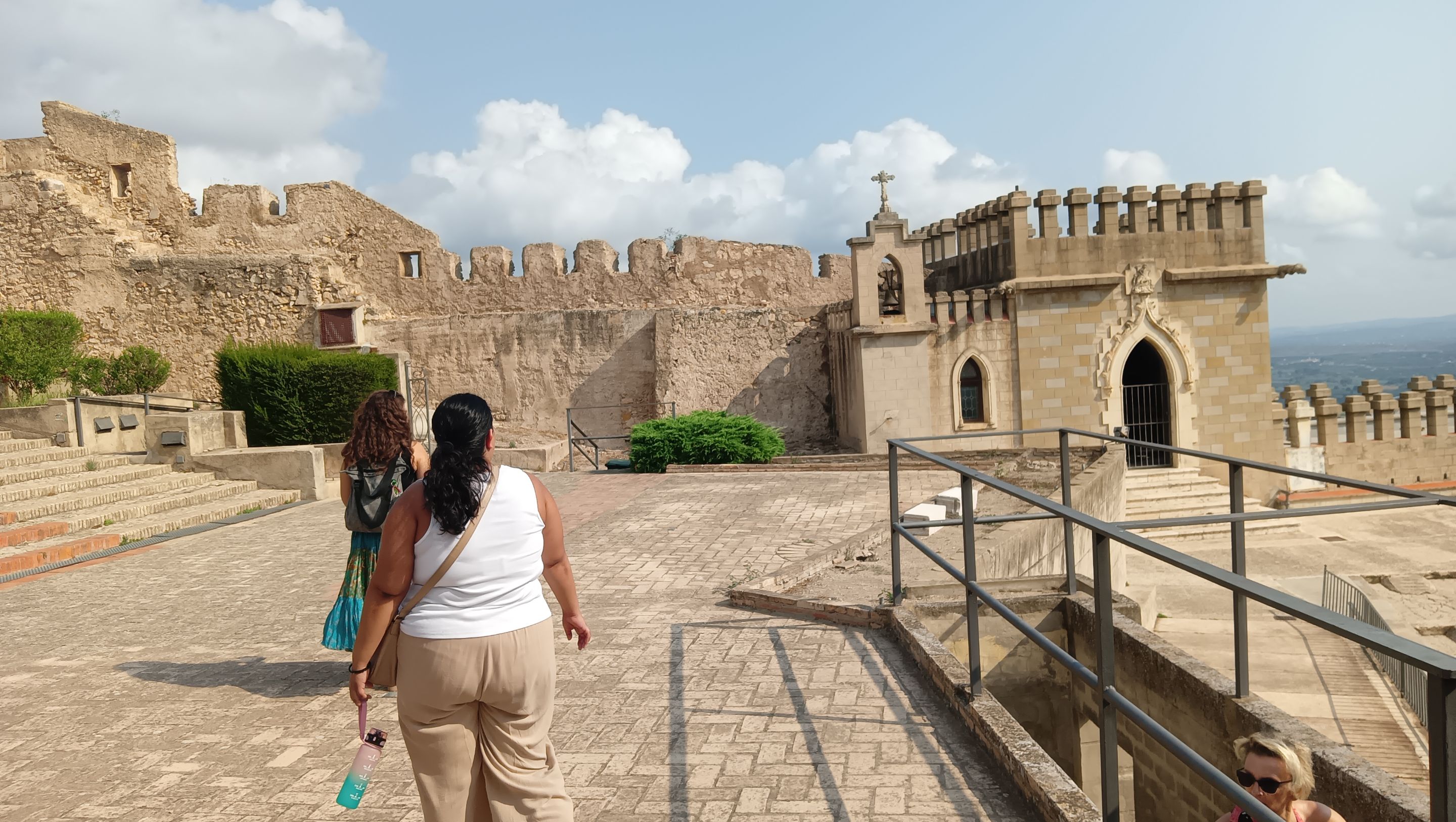


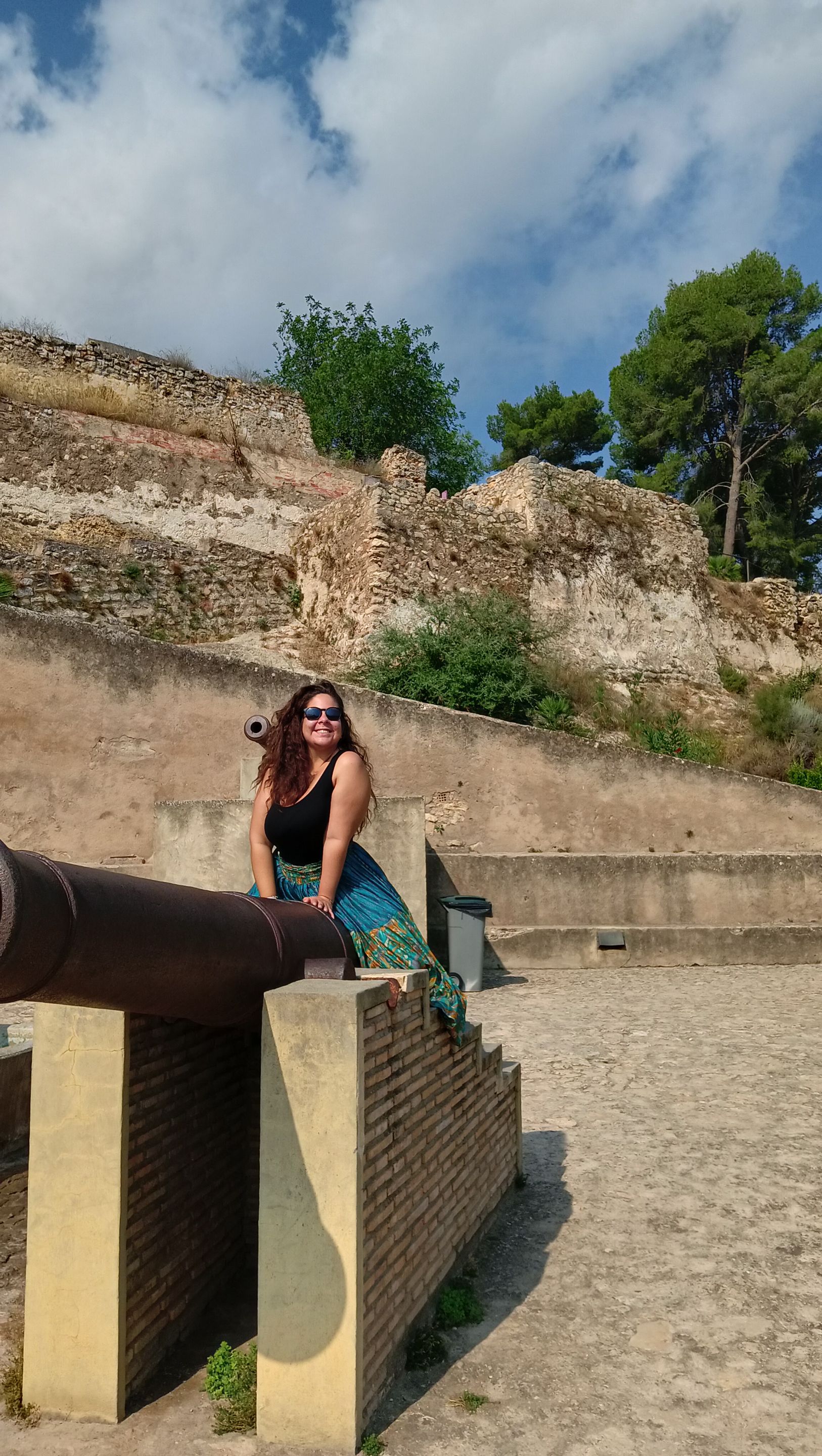
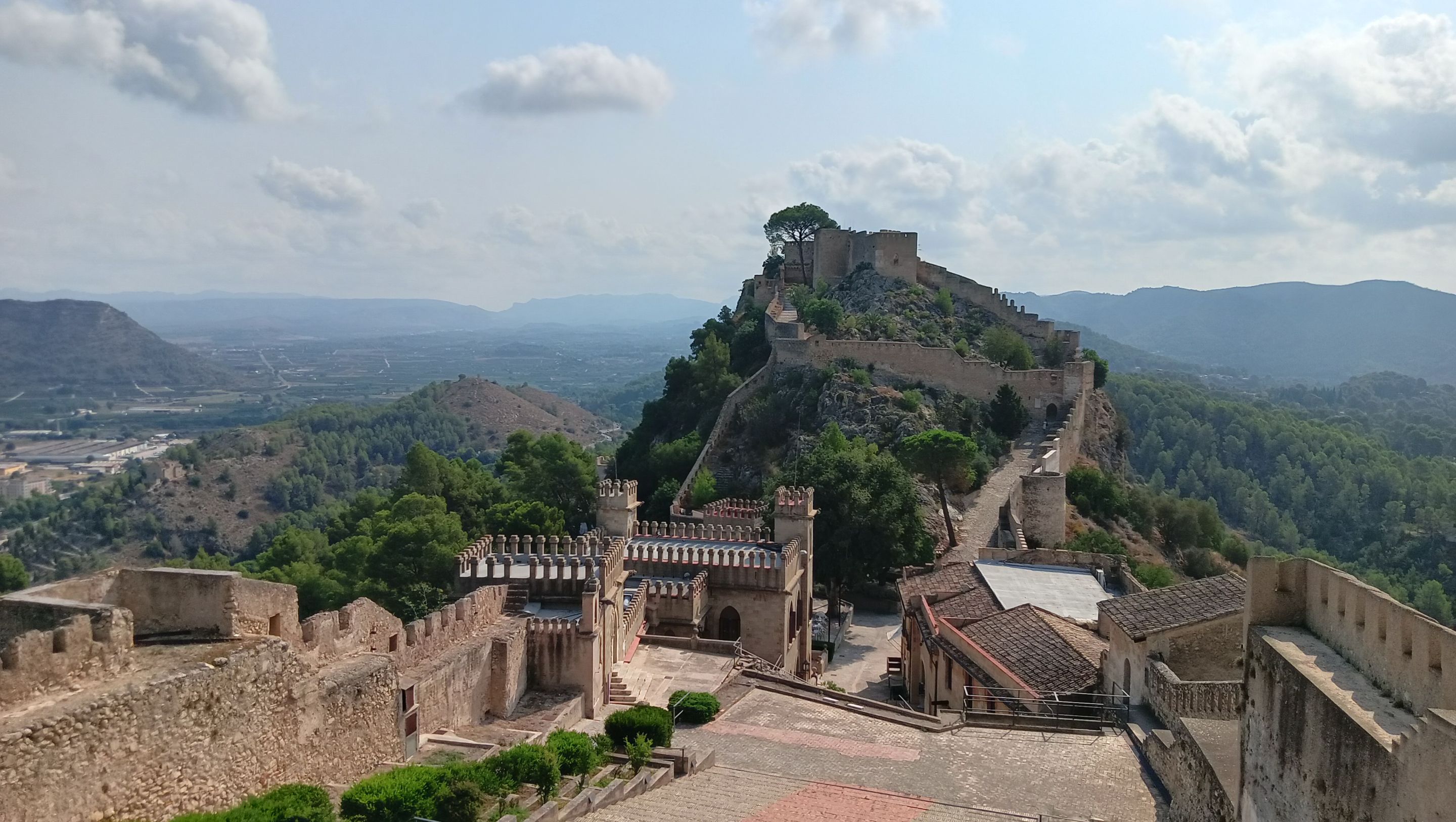
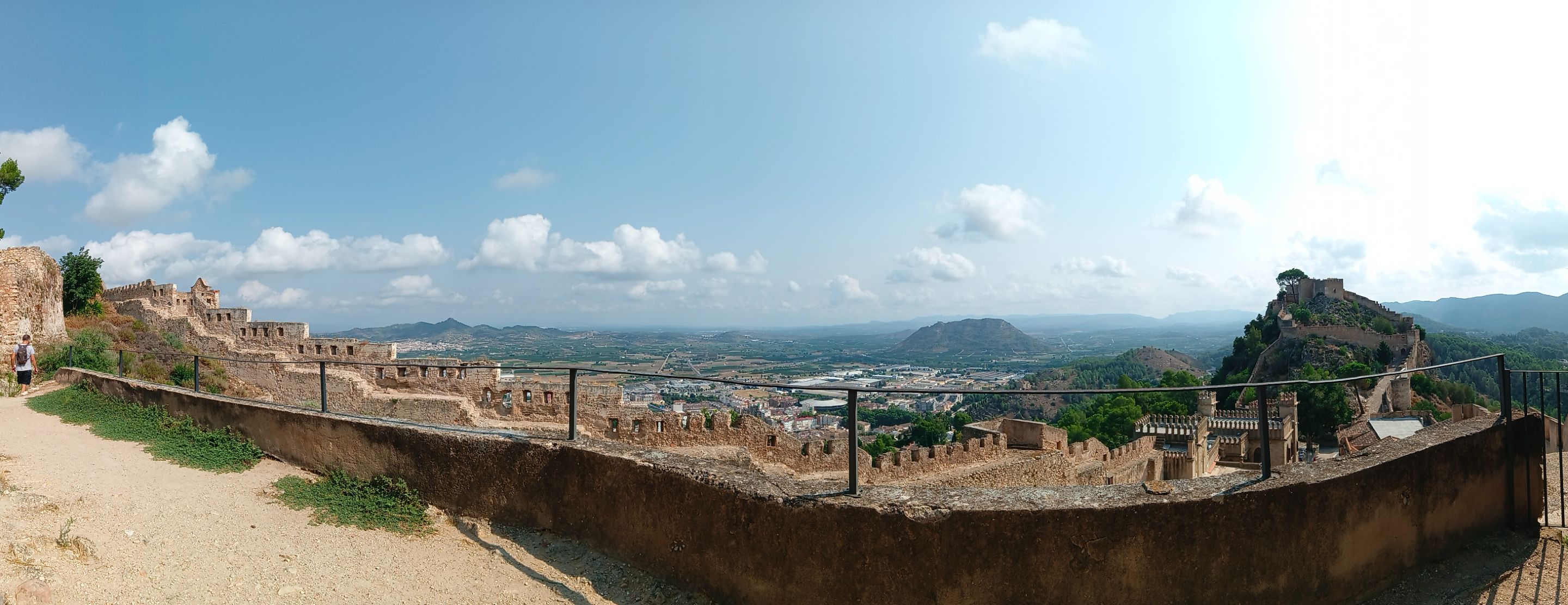
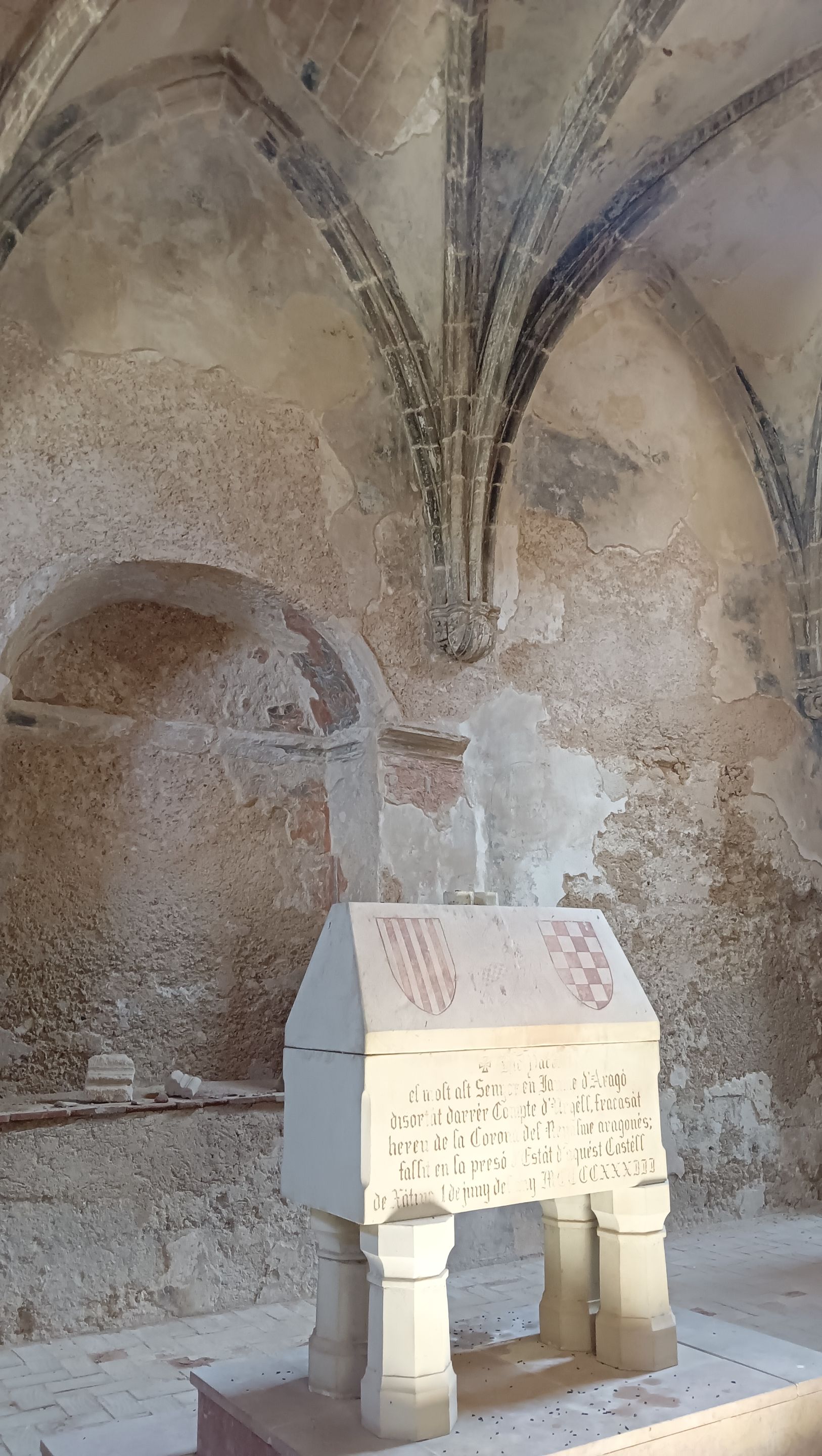
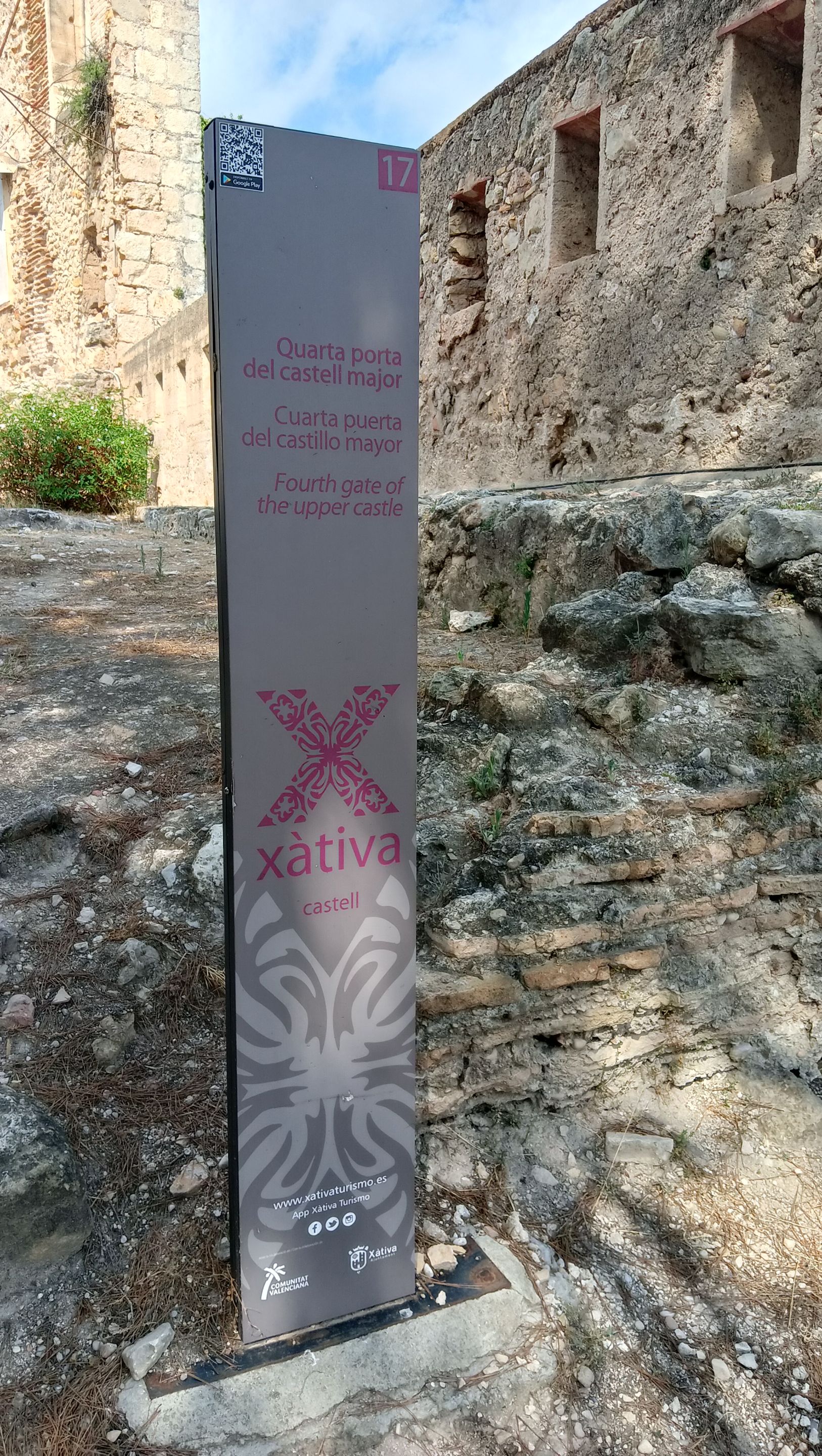
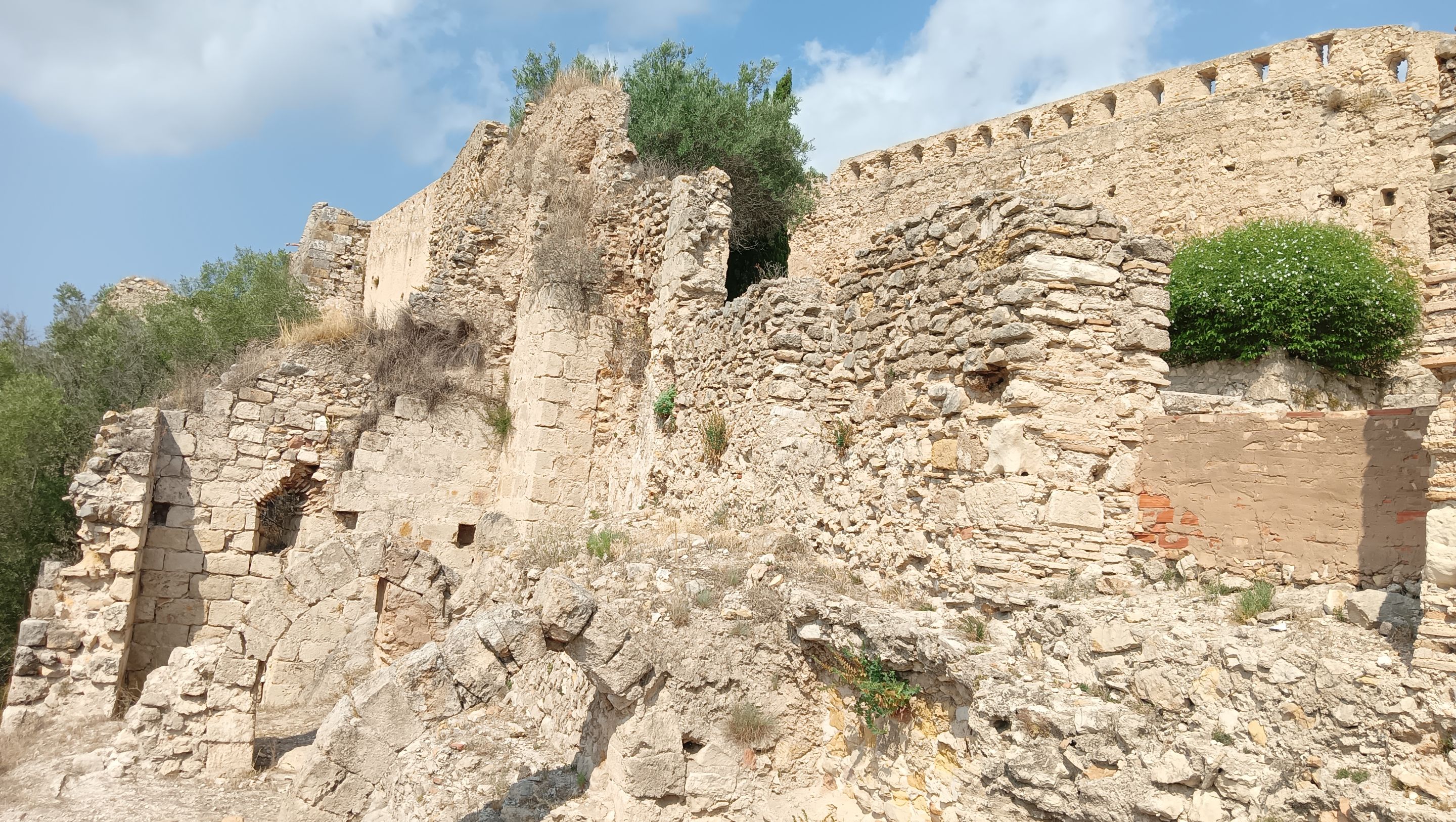
La entrada del castillo incluye la visita al museo de Arte de la ciudad y el autobús te deja muy cerca de él, a la hora que bajamos todavía se encontraba abierto, aprovechamos para visitarlo.
The entrance to the castle includes a visit to the city's art museum, and the bus drops you off very close to it. When we got off, it was still open, so we took the opportunity to visit it.
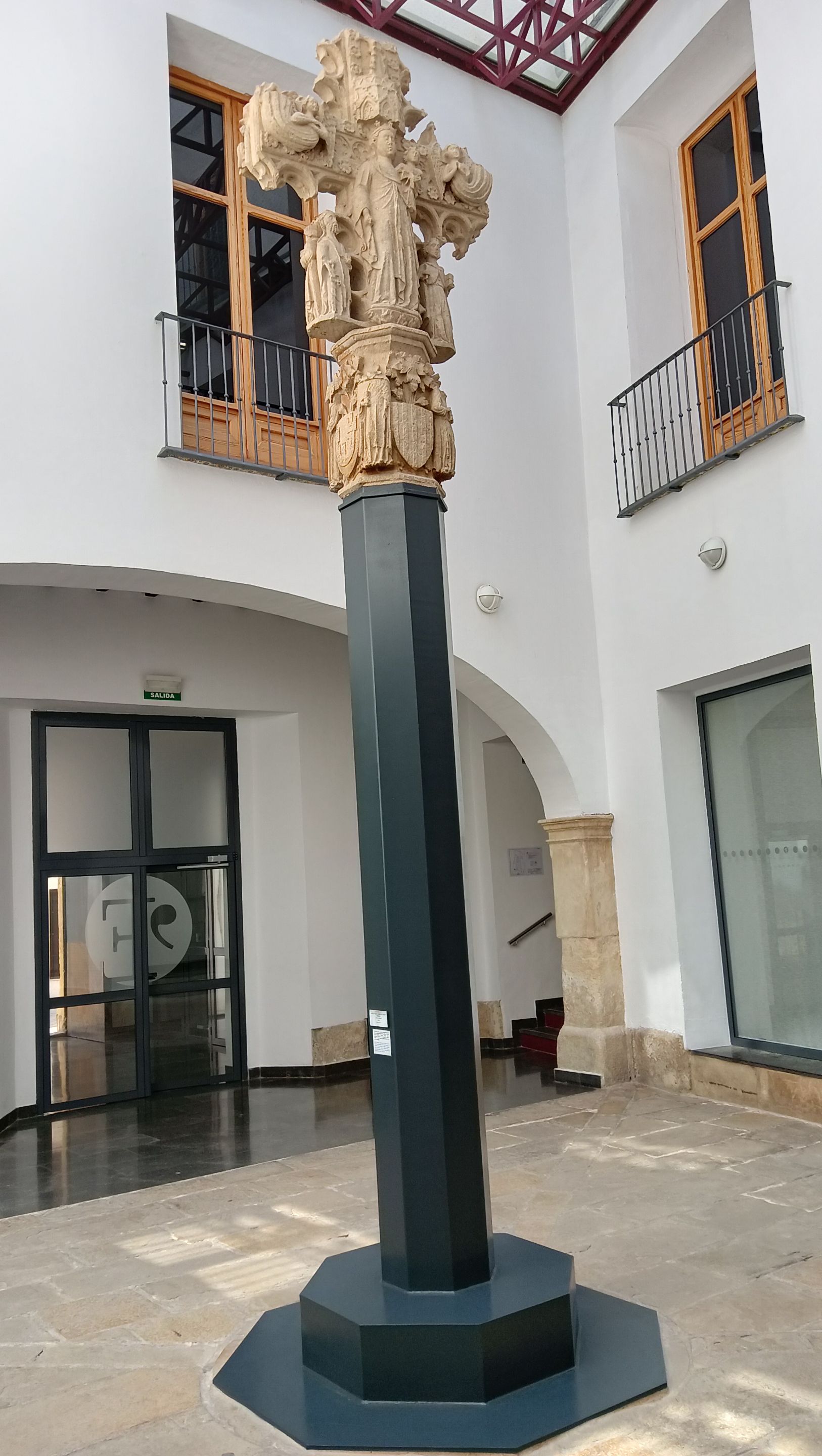
El museo tiene dos grandes espacios. Uno que recoge pinturas y esculturas de diversas épocas y el segundo correspondiente al llamado arte moderno. La pintura más cuidada y que resalta es una del Rey Felipe V que se encuentra volteada y la historia detrás de este hecho aparece en un panel a su lado, fue una manera simbólica de protestar porque el rey en 1940 durante la guerra de sucesión mando a incendiar y destruir la ciudad.
The museum has two large spaces. One contains paintings and sculptures from different periods, and the second is dedicated to modern art. The most carefully crafted and striking painting is one of King Philip V, which is turned upside down. The story behind this is explained on a panel next to it: it was a symbolic way of protesting against the king's order to burn and destroy the city in 1940 during the War of Succession.
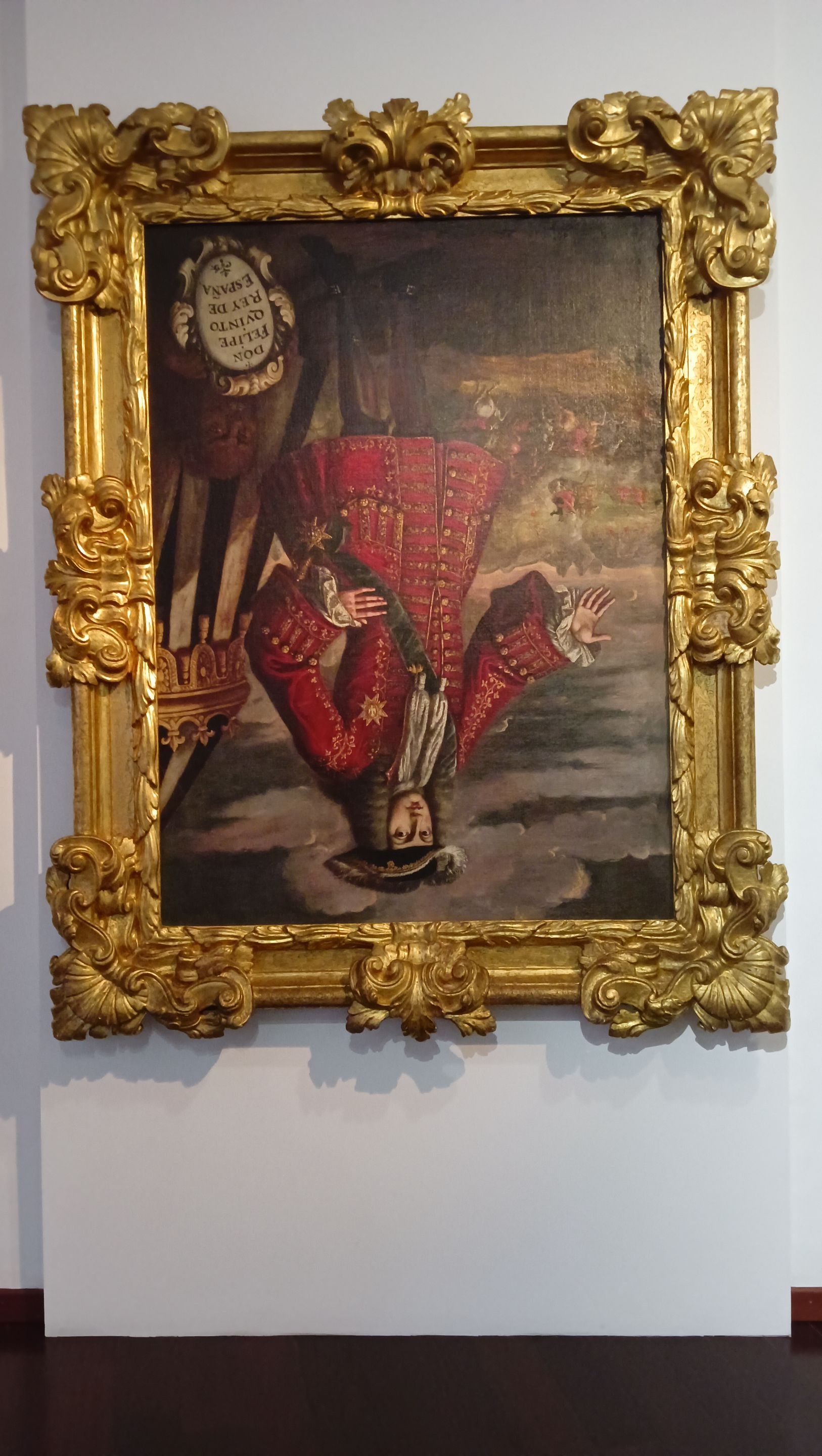

Me llamó mucho la atención encontrar una obra que relata el mismo hecho con conceptos artísticos y simbólicos distintos.
I was very struck to find a work that recounts the same event with different artistic and symbolic concepts.
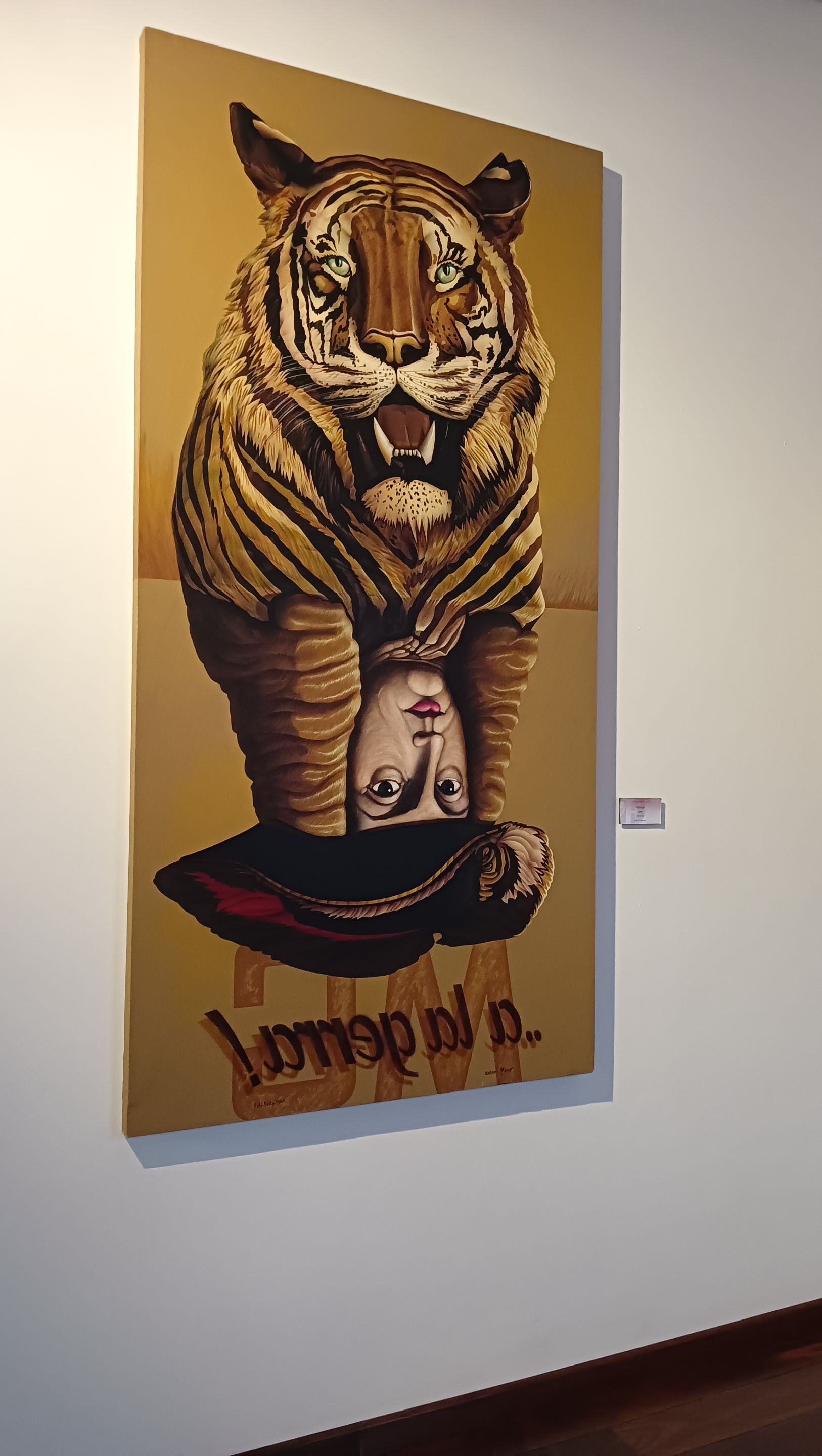
De esta manera dimos por terminada nuestro primer recorrido por la ciudad.
This brought our first tour of the city to an end.
